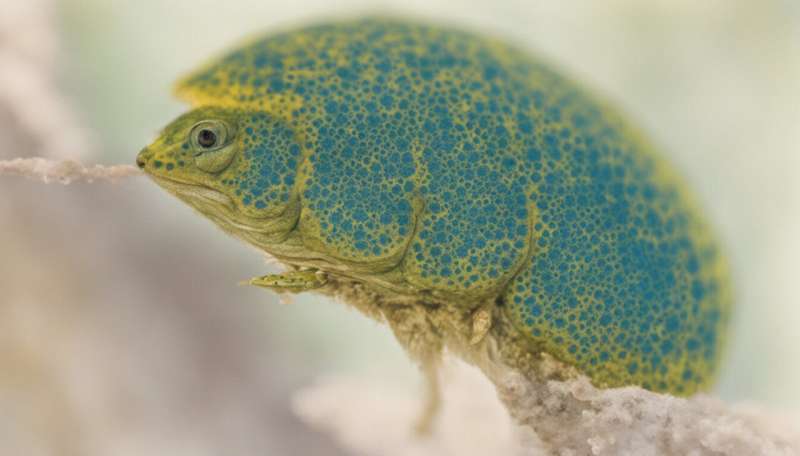Credit: AI-generated image (disclaimer)
On an island off the Queensland coast, a battle is brewing over the fate of a small population of goats.
The battle positions the views of some conservation scientists and managers who believe native species must be protected from this invasive fauna, against those of community members who want to protect the goat herd to which they feel emotionally connected. Similar battles color the management decisions around brumbies in Kosciuszko National Park and cats all over Australia.
These debates show the impact of a new movement called "compassionate conservation." This movement aims to increase levels of compassion and empathy in the management process, finding conservation solutions that minimize harm to wildlife. Among their ideas, compassionate conservationists argue no animal should be killed in the name of conservation.
But preventing extinctions and protecting biodiversity is unlikely when emotion, rather than evidence, influence decisions. As our recent paper argues, the human experience of compassion and empathy is fraught with inherent biases. This makes these emotions a poor compass for deciding what conservation action is right or wrong.
It sounds good on paper
We are facing a biological crisis unparalleled in human history, with at least 25% of the world's assessed species at risk of extinction. These trends are particularly bad in Australia, where we have one of the world's worst extinction records and the world's highest rate of mammal extinctions.
The federal government recently announced it will commit to a new ten-year threatened species strategy, focused on eradicating feral pests such as foxes and cats.
This approach goes against the principles underpinning compassionate conservation. The movement, which first emerged in 2010, is founded on the ideals of "first do no harm" and "individuals matter."
When you first think about it, this idea sounds great. Why kill some animals to save others?
Well, invasive animals—those either intentionally or accidentally moved to a new location—are one of the biggest threats to global biodiversity.
Invasive predators, such as cats and foxes, have caused the extinction of 142 vertebrate species worldwide. In Australia, feral and domestic cats kill more than 15 billion native animals per year.
Fortunately, endangered populations can recover when these pests are removed. Controlling pest numbers is one of the most effective tools available to conservationists.
Conflicting moral standpoints
Killing pests is at stark odds with the "do no harm" values promoted by the compassionate conservation movement.
Compassionate conservationists argue it's morally wrong to kill animals for management, whereas conservation scientists argue it's morally wrong to allow species to go extinct—especially if human actions (such as the movement of species to new locations) threaten extinction.
Thousands of wild horses are rapidly degrading the ecosystems of Australia’s high country.
These conflicting moral standpoints result in an emotional debate about when it is justified to kill or let be killed. This argument centers on emotion and moral beliefs. There is no clear right or wrong answer and, therefore, no resolution.
In an attempt to break this emotional stalemate, we explored the biases inherent in the emotions of compassion and empathy, and questioned if increased empathy and compassion are really what conservation needs.
Evolutionary biases
At first, compassion and empathy may appear vital to conservation, and on an individual level, they probably are. People choose to work in conservation because they care for wild species. But compassion and empathy come with strong evolutionary biases.
The first bias is that people feel more empathy toward the familiar—people care more for things they relate most closely to. The second bias is failure to scale-up—we don't feel 100 times more sorrow when hearing about 100 people dying, compared to a single person (or species).
Evolution has shaped our emotions to peak for things we relate most strongly to, and to taper off when numbers get high—most likely to protect us from becoming emotionally overloaded.
Let's put these emotions in the context of animal management. Decisions based on empathy and compassion will undoubtedly favor charismatic, relatable species over thousands of less-familiar small, imperiled creatures.
This bias is evident in the battle over feral horses in national parks. There is public backlash over the culling of brumbies, yet there is no such response to the removal of feral pigs, despite both species having similarly negative impacts on protected habitats.
More harm than good
If compassionate conservation is adopted, culling invasive species would cease, leading to the rapid extinction of more vulnerable native species. A contentious example is the race to save the endangered Tristan albatross from introduced mice on Gough Island in the south Atlantic.
Sealers introduced mice in the 1800s, and the mice have adapted to feed on albatross chicks, killing an estimated two million birds per year. Under compassionate conservation, lethal control of the mice would not be allowed, and the albatross would be added to the extinction list within 20 years.
What's more, compassionate conservation advocates for a more hands-off approach to remove any harm or stress to animals. This means even the management of threatened fauna would be restricted.
Under this idea, almost all current major conservation actions would not be allowed because of temporary stress placed on individual animals. This includes translocations (moving species to safer habitat), captive breeding, zoos, radio tracking and conservation fencing.
With 15% of the world's threatened species protected in zoos and undergoing captive breeding, a world with compassionate conservation would be one with far fewer species, and we argue, much less conservation and compassion.
In this time of biodiversity crisis and potential ecosystem collapse, we cannot afford to let emotion bias our rationale. Yes, compassion and empathy should drive people to call for more action from their leaders to protect biodiversity. But what action needs to be taken should be left to science and not our emotions.
Provided by The Conversation
This article is republished from The Conversation under a Creative Commons license. Read the original article.![]()
























